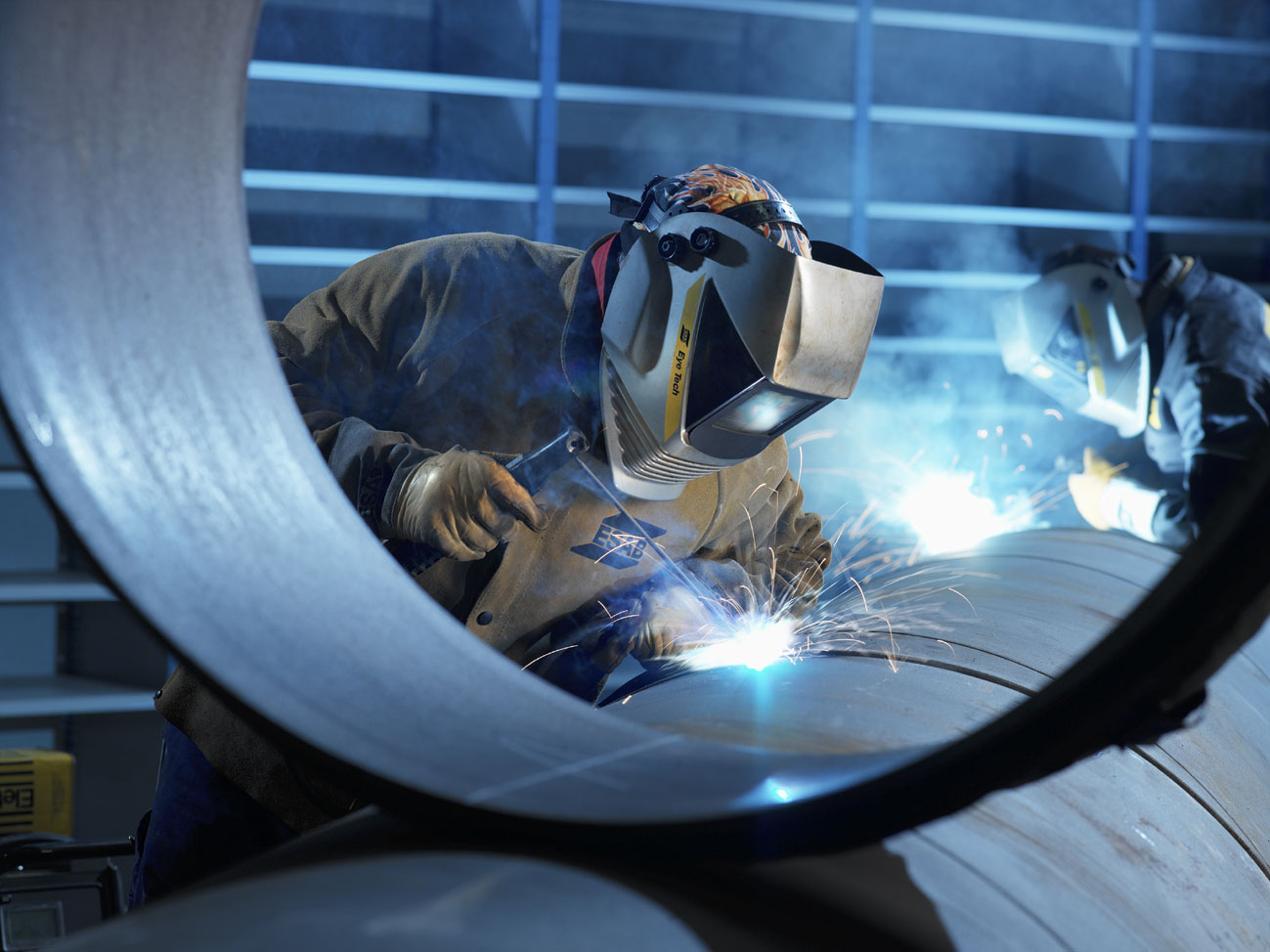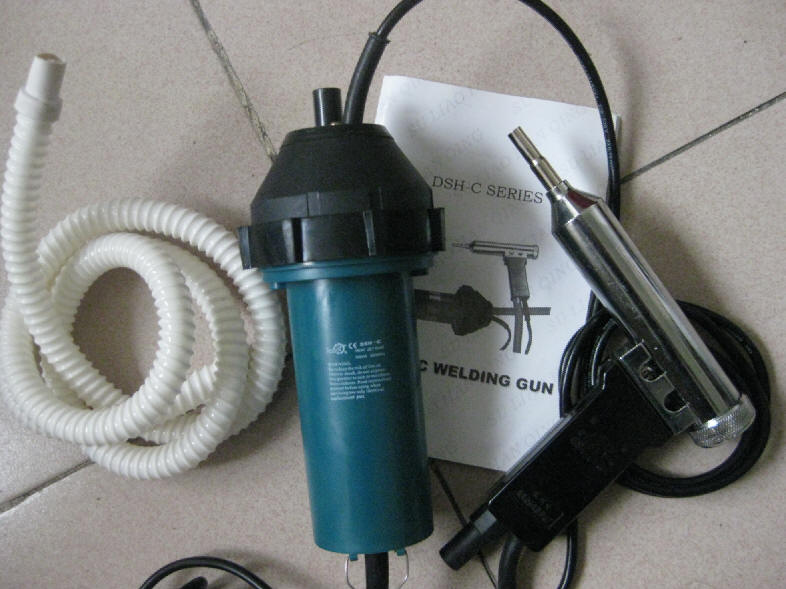Friction Stir Welding - How Does It Works ?
Friction stir welding, a process invented at TWI, Cambridge, involves the joining of metals without fusion or filler materials. The welds are created by the combined action of frictional heating and mechanical deformation due to a rotating tool. The probe penetrates the workpiece whereas the shoulder rubs with the top surface.
The heat is generated primarily by friction between a rotating-translating tool, the shoulder of which rubs against the workpiece. There is a volumetric contribution to heat generation from the adiabatic heating due to deformation near the pin. The microstructure of a friction-stir welddepends in detail on the tool design, the rotation and translation speeds, the applied pressure and the characteristics of the material being joined. The heat-affected zone (HAZ) is as in conventional welds.
The central nugget region containing the onion-ring flow-pattern is the most severely deformed region, although it frequently seems to dynamically recrystallise, so that the detailed microstructure may consist of equiaxed grains. It seems that cylindrical sheets of material are extruded during each rotation of the tool, which on a weld cross-section give the characteristic onion-rings.
A constantly rotated cylindrical-shouldered tool with a profiled nib is traversely fed at a constant rate into a butt joint between two clamped pieces of butted material. The nib is slightly shorter than the weld depth required, with the tool shoulder riding atop the work surface.Frictional heat is generated between the wear-resistant welding components and the work pieces. This heat, along with that generated by the mechanical mixing process and the adiabatic heat within the material, cause the stirred materials to soften without melting. This process of the tool traversing along the weld line in a plasticised tubular shaft of metal results in severe solid state deformation involving dynamic recrystallization of the base material.
 The Friction Stir Welding Process
The Friction Stir Welding Process
The top surface of the weld has a different microstructure, a consequence of the shearing induced by the rotating tool-shoulder. Friction-stir welding (FSW) is a solid-state joining process (meaning the metal is not melted) and is used for applications where the original metal characteristics must remain unchanged as far as possible. This process is primarily used on aluminium, and most often on large pieces which cannot be easily heat treated post weld to recover temper characteristics. It was invented and experimentally proven at The Welding Institute UK in December 1991.
The solid-state nature of the FSW process, combined with its unusual tool and asymmetric nature, results in a highly characteristic microstructure. The microstructure can be broken up into the following zones :
- The stir zone (also nugget, dynamically recrystallised zone) is a region of heavily deformed material that roughly corresponds to the location of the pin during welding. The grains within the stir zone are roughly equiaxed and often an order of magnitude smaller than the grains in the parent material. A unique feature of the stir zone is the common occurrence of several concentric rings which has been referred to as an “onion-ring” structure. The precise origin of these rings has not been firmly established, although variations in particle number density, grain size and texture have all been suggested.
- The flow arm zone is on the upper surface of the weld and consists of material that is dragged by the shoulder from the retreating side of the weld, around the rear of the tool, and deposited on the advancing side.
- The thermo-mechanically affected zone (TMAZ) occurs on either side of the stir zone. In this region the strain and temperature are lower and the effect of welding on the microstructure is correspondingly smaller. Unlike the stir zone the microstructure is recognizably that of the parent material, albeit significantly deformed and rotated. Although the term TMAZ technically refers to the entire deformed region it is often used to describe any region not already covered by the terms stir zone and flow arm.
- The heat-affected zone (HAZ) is common to all welding processes. As indicated by the name, this region is subjected to a thermal cycle but is not deformed during welding. The temperatures are lower than those in the TMAZ but may still have a significant effect if the microstructure is thermally unstable. In fact, in age-hardened aluminium alloys this region commonly exhibits the poorest mechanical properties.
The solid-state nature of FSW leads to several advantages over fusion welding methods as problems associated with cooling from the liquid phase are avoided. Issues such as porosity, solute redistribution, solidification cracking and liquation cracking do not arise during FSW. In general, FSW has been found to produce a low concentration of defects and is very tolerant of variations in parameters and materials.
Nevertheless, FSW is associated with a number of unique defects. Insufficient weld temperatures, due to low rotational speeds or high traverse speeds, for example, mean that the weld material is unable to accommodate the extensive deformation during welding. This may result in long, tunnel-like defects running along the weld which may occur on the surface or subsurface. Low temperatures may also limit the forging action of the tool and so reduce the continuity of the bond between the material from each side of the weld. The light contact between the material has given rise to the name “kissing-bond”. This defect is particularly worrying since it is very difficult to detect using nondestructive methods such as X-ray or ultrasonic testing. If the pin is not long enough or the tool rises out of the plate then the interface at the bottom of the weld may not be disrupted and forged by the tool, resulting in a lack-of-penetration defect. This is essentially a notch in the material which can be a potent source of fatigue cracks.
A number of potential advantages of FSW over conventional fusion-welding processes have been identified :
- Good mechanical properties in the as-welded condition
- Improved safety due to the absence of toxic fumes or the spatter of molten material.
- No consumables — A threaded pin made of conventional tool steel, e.g., hardened H13, can weld over 1 km of aluminium, and no filler or gas shield is required for aluminium.
- Easily automated on simple milling machines — lower setup costs and less training.
- Can operate in all positions (horizontal, vertical, etc.), as there is no weld pool.
- Generally good weld appearance and minimal thickness under/over-matching, thus reducing the need for expensive machining after welding.
- Low environmental impact.
However, some disadvantages of the process have been identified :
- Exit hole left when tool is withdrawn.
- Large down forces required with heavy-duty clamping necessary to hold the plates together.
- Less flexible than manual and arc processes (difficulties with thickness variations and non-linear welds).
- Often slower traverse rate than some fusion welding techniques, although this may be offset if fewer welding passes are required.
You might also like
| How does Friction Welding Work ? What is Friction Welding ? Friction welding... | Welding Pictures Welding Pictures Welding is a fabrication or sculptural process that... | What is Plastic Welding ? Welding Plastic Definition Plastic welding... | Welding What is Welding ? Welding is a fabrication... |




 Alloy Suppliers
Alloy Suppliers
 Aluminum
Aluminum
 Aluminum Extrusions
Aluminum Extrusions
 Copper-Brass-Bronze
Copper-Brass-Bronze
 Nickel
Nickel
 Magnets
Magnets
 Stainless Steel
Stainless Steel
 Stainless Steel Tubing
Stainless Steel Tubing
 Steel Service Centers
Steel Service Centers
 Titanium
Titanium
 Tungsten
Tungsten
 Wire Rope
Wire Rope